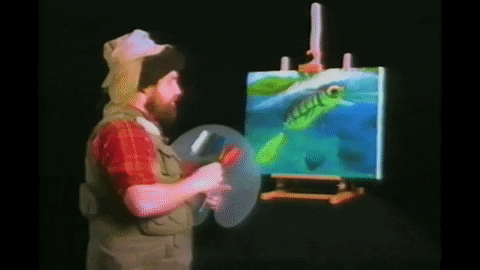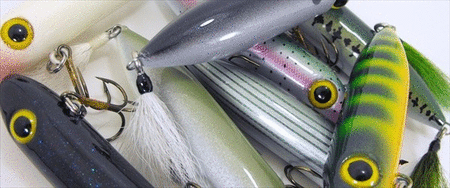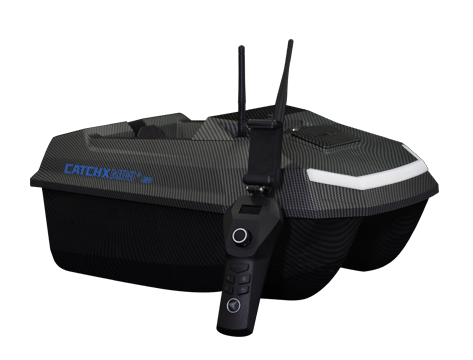Bass Fishing For Beginners: An Ultimate Guide To Get You Started.
Bass are deceptive fishes. Not only are they instinctive, but they are also adaptive and aggressive. which can’t be hooked by simply casting into waters. For most beginners, their first encounter with Bass is the moment they get hooked on this addictive sport. Now, puns aside, it’s not only addictive but also much complicated.
The purpose of this guide is to help beginners who are looking to venture onto their first bass fishing experience. And learn everything about this sport. Not just the gears but also the fish itself. so when the time comes you all are well-prepared to outsmart this deceptive animal.
So, let’s start this Bass Fishing for Beginner Guide by understanding the fish itself.
Where Do Bass Live?
Do you know what makes bass fishing so popular across the North-America? No, it isn’t the addictiveness of the sport alone. In reality, bass fishing is popular because you’ll find these fishes almost across all lakes and streams in the continent, (barring few exceptions, of course). So, wherever you are situated in North-America, you can be sure to reach Bass Lake within a few hours drives.
Now, most species of bass live over the structures in the lakes or any body of water. These are ambushing predators, who like to hide behind structures in the lake and wait for the prey to make the ambush. If there isn’t any structure available within the water body, the bass will simply settle to the bottom.
So, for the most part of the year, you won’t find any success finding bass in the middle of the water body.
Best Time To Fish For Bass
Now, Bass is a warm water fish, and that means they prefer to stay in warmer water. Interestingly, warm may be a relative term, when talking about different times of the year. Nonetheless, you should know that whatever the season, the fish will be hunting in warmer waters. Whereas for summers, it will be looking for relatively cooler water, as it can hold enough oxygen to survive in hot waters.
Remember, even the temperatures within a lake can vary by as much as 10 centigrade. So, learning the temperature-driven migratory patterns of Bass within the lake is important to catch it all year round.
What Bass Eat?

A better question would be, “what doesn’t a bass eat?”…
Honestly, Bass aren’t picky about their eats and can eat anything that fits in their mouth. I didn’t believe it when one of my friends and an avid bass angler told me that he has seen them eating birds, frogs, and even other basses. However, this was confirmed by various other anglers and there remains little to doubt. So, as I said, Bass is an opportunistic predator and will eat anything that fits into their mouth (maybe even things that don’t fit in their mouth).
So, what should you throw?
Honestly, this could either be an easier pick or a tricky one; depending upon the mood of the fish. Generally, the best food to throw in would be the forage in the lake (so, you should find about it first).
Now, since crayfish is found in all lakes across the country, Bass will definitely eat crayfish. Moreover, you should also find out any specific forage found in the specific lake.
Types of Bass

Ok, now that you know the basics of bass, let’s get introduced to different types of bass and the best way to catch them.
Bass can be divided into many types. Among them, two of the most common types of Bass include; small-mouth bass and large-mouth bass. Fishing for each of these types requires a distinctive approach, gears, and awareness.
Small-mouth Bass
As can be taken by name, these are small variations of the bass, which are the members of the sunfish family. Small-mouth bass (also known as Black Bass) is restricted to freshwater areas.
These fish can weigh up to 12 pounds and grow as much as 27 inches, although most are smaller than this. Smallmouth bass is native to Hudson bay, Upper and Middle Mississippi and the Great Lakes System. Which all are great places for beginners to get their hands around these fishes.
Unlike their larger cousin, smallmouth bass move a lot without cover, which is why they are more prone to hit most fishing baits. These are also more aggressive than the largemouth bass. Smallmouth bass is most active in warm waters and moves in fast current waters.
Largemouth Bass – Go Big!
The largemouth bass is the biggest species of the Black Bass family and can reach the size of over 3ft and weigh up to 25 pounds. On average, largemouth bass weighing up to 5 pounds and 18-inch size.
The largemouth bass is found across North and Central America in most freshwater bodies including rivers, lakes, ponds, and streams.
The best way to catch largemouth bass is to use the medium to big artificial baits like plastic lures or crankbaits. Live baits like crawfish, frogs or minnows are also effective to catch largemouth bass. As I said above, it’s an intelligent and adaptive fish. Which means you will mostly get just one go with a specific type of bait. so if you missed an opportunity, go with another bait.
Bass Fishing Gear For Beginners

Ok, now that you know about the basics of bass fishing, let’s move on to the best fishing gears. I have broken down these into categories like a rod, reel, line, and lures for better understanding. The idea is to list everything you need to buy, so you can pick the best-suited gears in one trip, which can be used across different places all year round. So let’s get started!
Rod and Reel for Bass Fishing
The first thing you would want to invest your money in is buying a good rod and reel. As a beginner, I won’t recommend you to go with multiple rods and reels (that would be expensive). Rather, you should go with one best-suited rod and reel at the start and then add the combos as you progress.
Brands like Shimano, FXC, Ugly Stick and St. Croix all offer some great reliable bass fishing rods. There are other great brands as well, but, since I have used rods from these brands I can attest to their usability and reliability to get started with.
Now, moving on from brands, there are two specific categories of rods including spinning and casting rods; each with its pros and cons. Let’s quickly go through them as well.
Spinning Rods & Reels
Spinning rod combo is versatile and offers easy handling and precision for beginners. The best part about spinning reels for beginners is that the reel won’t tangle easily, thus you have less to worry about. Spinning rods are lightweight and easy to use when you need constant reel in and cast out. On the downside, spinning rods aren’t great to hook large catch and too much tension can rip the eyelets. These are also less precise than casting rods; however, that won’t be a matter for beginners.
You can easily get a great spinning rod and reel setup within $150 - $200, which may last for a year.
Casting Rods & Reels
Casting rods offer even weight distribution across the pole, which translates to more strength and more suitability to catch larger bass. These rods can be used with heavy or light lines and are more precise than spinning rods. However, using casting rods is a bit of a learning curve, with definite advantages. If you are to go with a casting reel set up, I would recommend giving yourself a few days to practice thumbing the spool and get used to the casting brake system.
Best Fishing Line for Bass
If you are going with a spinning rod, I won’t recommend you going with a line heavier than 10 pounds. That’s because with heavier lines casting a medium bass sized spinning reel becomes a bit difficult. So, if you want to save yourself from frustration, don’t go with a heavier than 10lb reel with a spinning rod.
Here are some great line options covering braided, as well as, filament line to go with spinning and casting rods. Just add some pounds to use with casting rods and keep it within the 10lbs limit for spinning rods.
Monofilament
It’s a great choice for beginners looking to get into the bass fishing sport. Monofilament reels are the cheapest, as well as, the easiest to handle. One downside of using monofilament reels is that you will increase the chances of breaking the lures. As the monofilament is prone to get nicked up on structures (rocks, woods, etc.)
Fluorocarbon
Fluorocarbon is yet another popular type of reel for bass fishing. Yet, I won’t recommend fluorocarbon reels for beginners, especially to use with spinning rods. As for casting rods, you can use 15 – 20lbs reel to test. You should also learn to tie Palomar knot and ensure that the line strands don’t cross each other. A secret is to use a good line conditioner, to get rid of that extra stiffness in the line and avoid bad backlashes.
Braided
A braided line comes with a smaller diameter, without compromising the strength. In fact, braided reels are much tougher than monofilament or fluorocarbon reels. The only downside is that it’s not easy to handle and they cost more upfront. However, braided reels will go a long way.
Best Bass Lures for Beginners

Texas Rig
The Texas Rig is a kind of a legend lure for the bass fishing. The up and downslide of the weight in the Texas rig is almost impossible for Bass to resist, thereby, significantly improving your chance to make the catch.
Texas Rig works perfectly with almost all types of plastic bait, however, a regular bass worm with fluttering curl tail is damn effective.
Senko
The Senko is yet another great bass lure for beginners. You can simply let the Senko fall on a slackline across any visible piece of cover. The seductive movement of the rig will tempt the bass to ambush and get hooked.
Spinnerbait/Swim jig

Spinnerbait and Swim jig are two quite simple lures to use for Bass fishing by beginners. All it needs is to cast the lures and get them “slow roll” (reel as slow as possible, while hovering over the bottom). Even though both the lures are quite effective, the swim jig is more suited when you are fishing in waters with heavy vegetation.
Bass Fishing Techniques

So, we have a fish that’s aggressive, adaptive and witty and to make matters even worse, you don’t have prior experience. The problem is that even with the best bass fishing gears, you got to know the basic secrets of the game to be able to pull out those river monsters.
Now, just like with any game, there is no one secret technique to master the art of bass fishing. You rather have to adapt the best practices to give yourself a chance to make a catch. In general, your technique would differ depending upon the season. Your approach would vary greatly for different times of the year like summers, winters, autumn and spring. The best techniques will also depend upon your target specie; largemouth bass or small mouth bass.
As a matter of fact, there isn’t a substitute for experience, which is why the more time you spend struggling over waters, the better you’ll become in catching those witty monsters. Below I have come up with some compounded bass fishing techniques that can help you improve your catch rates and learn the skills quicker.
1. Find the Cover
As we discussed above, the bass is witty predators that typically wait under the cover for the prey to come near before they attack. That means that your chances to find a bass rests with your ability to discover the perfect covers present in the water body.
The cover could range from large rocks to boat docks and from lily pads to grass and everything in between. Just remember that your next catch will be temptingly waiting for its prey concealing behind the cover and the better you are at discovering the covers, the more chances you get to make a catch.
2. “Match the Hatch”
Again, this is something that we have already discussed above, which is to say that bass is savages. These river monsters can eat almost anything they can swallow (sometimes even bigger). The bass prey could range from small fishes to frogs and even baby ducks, depending upon the prey available in the water.
This means that when you are out to lure a bass, you need to “Match the Hatch” by imitating the forage that’s commonly found in the water body. So, if the water body has loads of shad, you need to throw in a silver-colored bait to imitate the shad and so on.
3. Time of Day
Bass may feed at different times of day in different seasons. In general, the bass is more active in warmer summers, whereas, they only feed limited hours in winters; during the warmest hours of the day. So, depending upon the weather, you need to choose the right time of the day to improve your chances of making the catch.
4. Water Temperature
Continuing from the above point, bass likes to feed in relatively warmer waters. Now, as we pointed out earlier the temperature of the water body may differ by as much as 10-degree centigrade at different parts. So, when you put your line, make sure you choose warmer waters, with active bass.
5. Know the Wind
Bass typically likes to swim into the winds. This is to say that when you are positioning the line, make it downwind of them. Stronger winds encourage bass feeding, plus it also helps you avoid spooking the fish contrary to calm conditions.
A Few Expert Secrets

Now that we have gone through all the standard stuff, I am pretty sure you will be bored to death, right? Well, pun aside, how about I give you some real-life secrets for Bass water fishing, so when you hit the waters, you can put them to test.
Use Shredded Worms
As we said above, Bass is a predator that ambushes on its prey and like all predators, nothing moves Bass more than to pounce on wounded prey. So, instead of throwing the shredded lures, put them to work and see how bass gets hooked to it.
Red Lures
No, we aren’t talking Bulls! But believe me red color doesn’t just get bulls moving but also the Bass. That’s because the red color is the signal of blood and wounded prey. So, next time you hit waters for Bass fishing give them some red lures to hooked up with.
Make Some Noise
Again, as an ambushing predator, Bass reacts to certain noises. And if you are able to make the noise by hitting the lure on to the water surface (keeping everything else in check), you will get a bite for sure.
Conclusion
So, we now come to the conclusion of this long post and I hope that by now you will have the basic insights into Bass Fishing for Beginners.
The Mantra that has helped me over the years polish my Bass fishing skills – K.I.S.S























